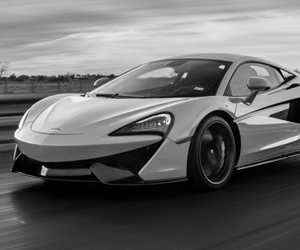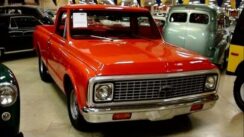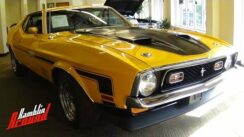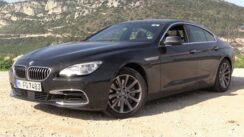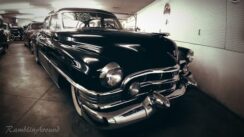Muscle Cars vs Pony Cars

“Hey man, sweet sports car,” says some dude talking about your Ford Mustang. You correct him, stating it is a muscle car, but a baby-boomer curmudgeon steps in and says you are both wrong. Who is right? Well, that depends on who you ask, and even exactly what year model you are talking about. Come along, as we try and demystify some decades old terms, and learn what makes a muscle car different from a pony car.
There is a lot of name confusion here, and taking a closer look, it’s easy to see why as there are a lot of similarities. Both terms appeared in the mid-‘60s, and only applied to American iron. Muscle cars and pony cars can be very quick, and were primarily targeted at the youth market. Both classes are accepted as seating at least four adults, power driving the rear wheels, and more of an emphasis on straight line performance. Controversial areas of classification include the year of manufacture, engine size, and number of doors.
In the strictest technical terms, a muscle car is an intermediate chassis with a full-size’s engine (ie, a big block). This puts big car power and torque into the medium size body. In modern terms, think of it like Hyundai stuffing the 5.0 liter V8 from the Equus into the mid-size Sonata. Surprisingly, purists don’t care about the number of doors a muscle car has, but traditionally speaking they are coupes, as that was the biggest selling body style back then.
Using these strict definitions, the muscle car was created in 1964 with the intermediate Pontiac Tempest receiving the big Bonneville’s 389 V8, creating the GTO option. Yes, Chrysler had big power in their 300 coupes as far back as the ‘50s, but those were full-size cars, and massively expensive. The GTO was cheap, but handled like the suspension was made of Slinkys. Less talked about, the muscle car was also born to be affordable.
The compact Ford Falcon received a rather attractive 2nd generation makeover, and Ford wanted to distribute costs by creating a sportier version of the same car. Thus, the 1964 Mustang was unleashed on an unsuspecting public, and the world was never the same. Small, lightweight (under 2,500 lbs!), affordable, and with tons of styling, the Mustang was a massive sales hit. Other manufacturers quickly followed the same formula, altering their boring compacts for style and performance, and the pony car wars were underway.
Now, we’ll look at where we are today, but first, a look at what happened. The ‘70s weren’t great all around for anyone, and they were terrible for performance cars. Emissions regulations killed horsepower output, and rising insurance rates meant teens might be able to buy a muscle car, but couldn’t legally drive it. The gas crisis lead to a desire for economy for most buyers, while the others wanted luxury. Most muscle and pony car didn’t make it to the late ‘70s, and the few that did were all flash.
Today, we still have some surviving muscle and pony cars, if you are willing to stretch the original definitions. Since the GTO, Chevelle, Galaxie, and all other muscle cars didn’t survive the ‘70s, let’s look at the pony cars for now. During the ‘80s, there was increased emphasis on fuel economy, handling, and braking ability. The formerly compact pony cars gained size and weight, and learned how to take corners and stop in a reasonable distance. The 21st century saw a resurgence of the performance pony car from the Detroit Three, and, arguably, a return of the muscle car.
The Ford Mustang, Chevrolet Camaro, and Dodge Challenger all have the basic pony car mix. The current generation has impressive handling and braking, while still offering sporty looks at an affordable price. Arguments come up due to massive changes when compared to the original recipe. The new versions are longer, wider, and taller than the old pony cars, and the definitely heavier. The Challenger comes in at 4,100 lbs, and the others are fairly close behind. While that weight comes with massively more interior space, technology, convenience, and safety, the question remains about what class they are in.
Since the Mustang/Camaro/Challenger are much larger, they are absolutely no longer compacts. In the purist definition, they are not pony cars. Since the big blocks are long gone, the Dodge Charger is not a true muscle car. Even the Hellcat, with 707 hp, is running a 6.4 liter small block, which rules out muscle car.
So what we have here is a limitation of the terminology. Since these cars are not muscle or pony cars, what are they? Certainly not sports cars, as those are limited to 2 seats with a massive emphasis on steering and handling dynamics. Insurance companies call the Mustang a sport coupe, but that’s a bland term more fitting of Honda Preludes and Toyota Celicas.
And that brings us to our problem today. With seemingly no fitting title for the segment, how does a marketer quickly drive a point home to a buying public with a short attention span? Advertisers, like a lot of people, take the lazy route if given a chance. Everyone sorta knows what muscle car means, so they attach the label to the current cars. It fits because there is nothing else close.
What we need is a new category, a new segment descriptor. It’s like how we use “film” for movies, when everyone shoots with digital. There is no actual film, and there are no actual muscle cars or pony cars in existence today.
So I’m going to leave this up to our readers. Should we continue to use incorrect terms, or create a new category? If the latter, what should it be called? Or, perhaps for simplicity, there is an argument to be made for leaving things as they are, and calling them muscle cars or pony cars as you see fit.
Album does not exist!



































